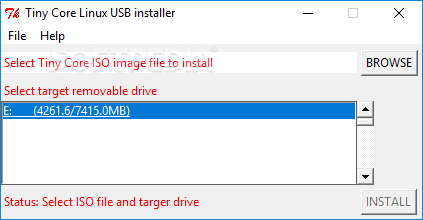Start the virtual machine that you created and follow these steps:

Choose the installation option shown in the following screen capture:
Run the Tiny Core installer by clicking TC_Install:
- Tiny Core is different because users are not encouraged to perform a 'traditional', hard-drive installation of the operating system. Sure, a hard drive installation is possible, but Tiny Core is designed to run from a RAM copy created at boot time.
- The installer will automatically set up the Extlinux bootloader so you can start either Tinycore or Windows. Option 3: Install Tinycore in the Windows partition Download the latest multicore iso from one of the mirrors, and write it to a CD. Put the multicore CD in the drive, and restart the computer, so it runs Tinycore with grub4dos.
@Jop: No, the X server is the core of the linux GUI; it's a fairly substantial package. Window managers like openbox are just a layer on top of X. When skimming that wikipedia article I mistook 'fltk' for 'lxde', but 'flwm' (the window manager on tiny core that uses fltk) is stil an Xorg client.

Start the Tiny Core installation and follow these panels to install it on an empty harddrive:
Leave the pre-filled path as core.gz (default path).
Select the check box Whole Disk and select sda asthe core disk.

Any user files and extensions are stored outside the base operatingsystem.
Format the new partition. It is recommended that you select the ext4 option to support theLinux permissions.
If you want to use additional boot codes, such as screen resolution or keyboard mapping, enterthem now.
Install Tiny Core Linux From Windows
Set the location of the persistent home directory home=sda1.
Set the location of the persistent opt directory opt=sda1.
Select the Core Only (Text Based Interface) option to havea virtual machine with only the CLI.
If everything is OK, click Proceed.
The time required varies depending on the size of your hard drive.
Peppermint Linux
Tiny Core Linux is now installed.
Restart the machine by clicking Exit, selecting Reboot, and clickingOK.
By choosing to reboot, you ensure the data persistence. Do notuse Shutdown at this stage.